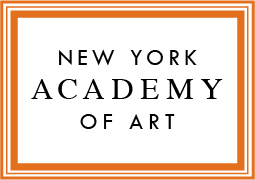Despite the heaviness that accompanies its long history, Leipzig is weightless. The city and the people inhabiting it are full of life and excitement; there is always a gallery opening, a festival, a BBQ or just a party going on. In Leipzig nightlife goes on till 6 or even 9 am, the city could easily steal the title of ‘the city that never sleeps’ from New York. It’s said that Leipzig is like New York in the 80’s, people here are excited and active participants in the art scene, and there are a lot of opportunities for creative projects to emerge here. I’m part of a one-year long residency project called the One Sided Story. Over the course of the next year, a large number of alumni from the New York Academy of Art will work alongside artists from the Croatian Art Association (HDLU) and artist from Poland, France and Germany.
Over five weeks ago I worried and wondered what it would be like to leave New York and make work in a different city, in a different studio for such a long period, no longer a student but a fully-fledged artist. Would my work survive when it was so suddenly surrounded by many of my biggest artistic influences? Would I fail to find my voice when I arrived? Was the decision to show new work created in Leipzig for my first solo show a bad idea? Would my definition of Work, a creative life that is one both in and out of the studio, survive when truly put to the test? My very first week here, I found a video, an interview, with Germany’s own Anselm Kiefer. The interview was done during an exhibition at the Louisiana Museum of Modern Art in Denmark, and Kiefer discusses Work and process. He goes on to say that “art is a fluid, it is a river, and it is never finished.”
As an artist one of the most sought after things is to create work that has clarity, for the viewer but more importantly, for you. In the studio we constantly look for a fresh perspective or new angle to access our own thoughts and images. Each day of work, good or bad, adds an additional layer over our eyes that can be impossible to see through at times. Ultimately we search for a way to be immersed in the work but to also see it clearly with distance.
A lot of artists travel to find that distance, but they never tell you about the distance they bring back with them. No one in art school ever said that your work is what you carry with you, whether it’s on the subway in New York or a bicycle in Leipzig or a plane flight between the two. We know so little about what we carry, and finding out depends on how hard you are willing to dig.
I learned how to dig in Leipzig.
